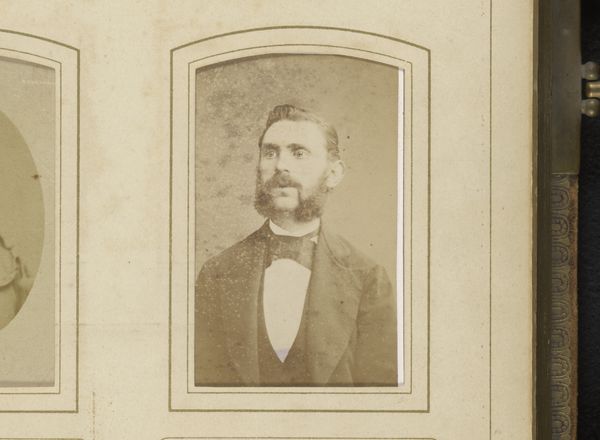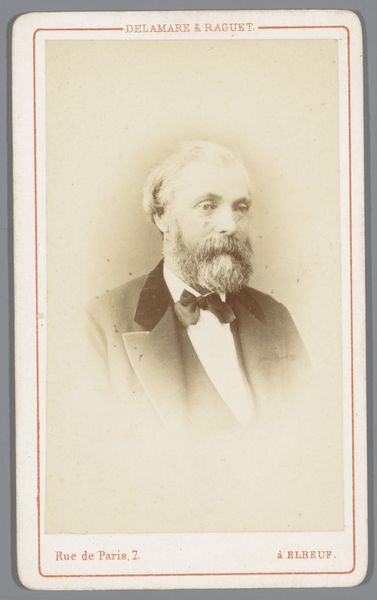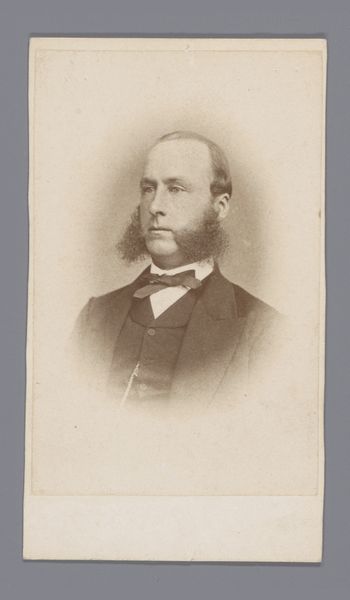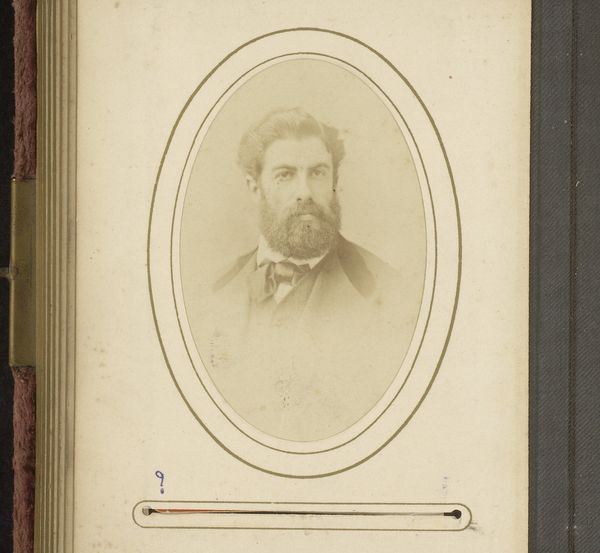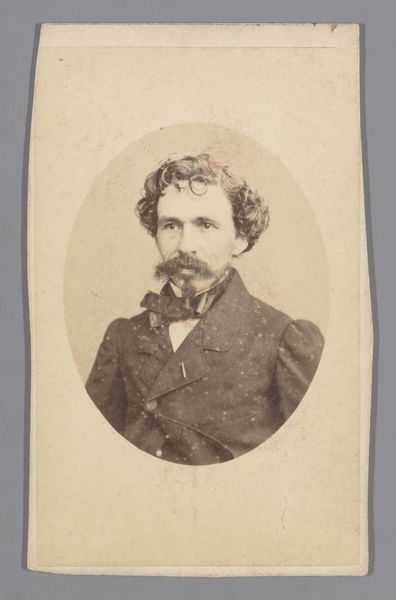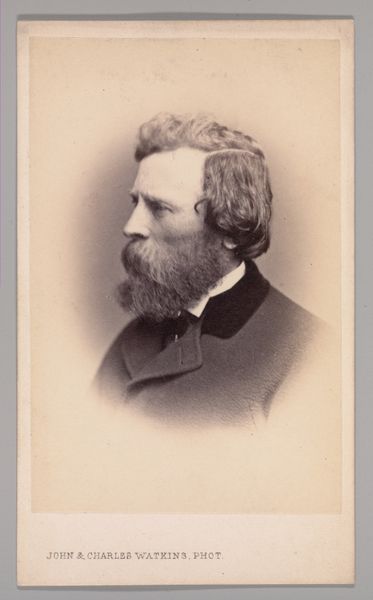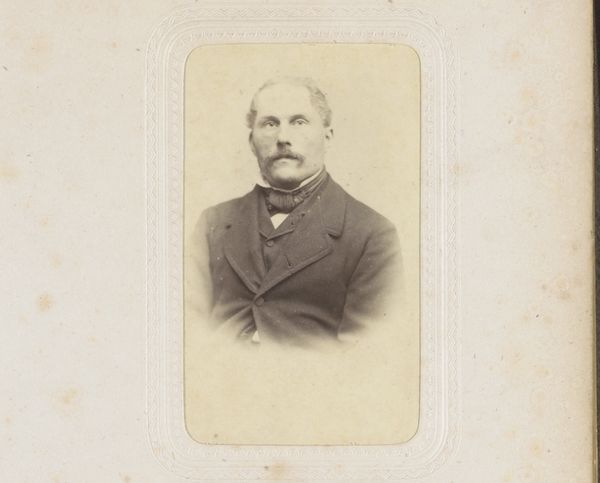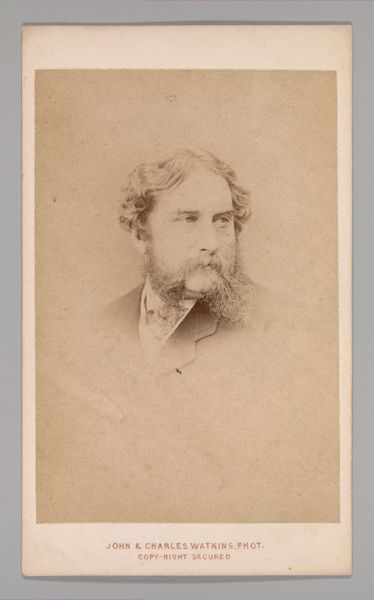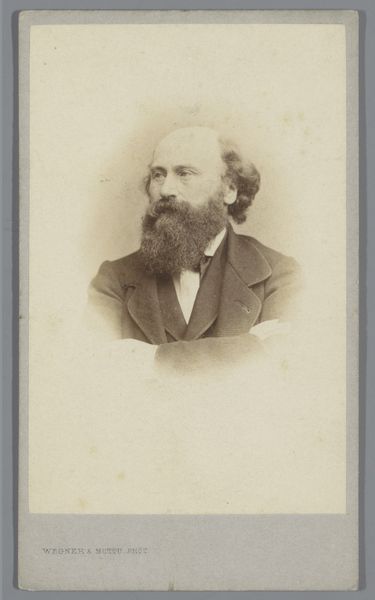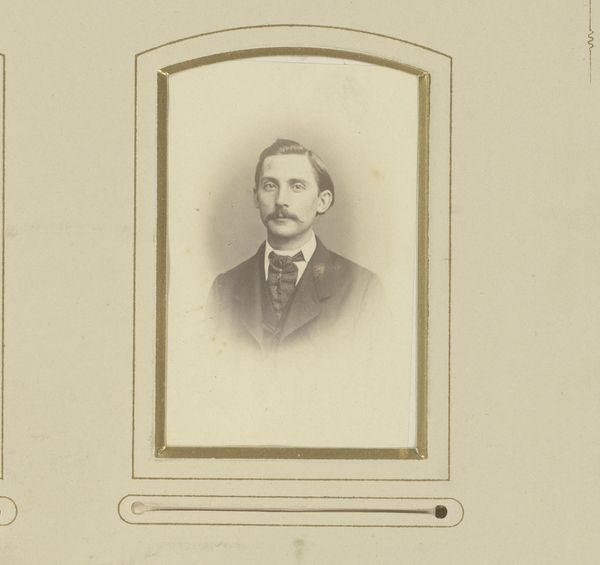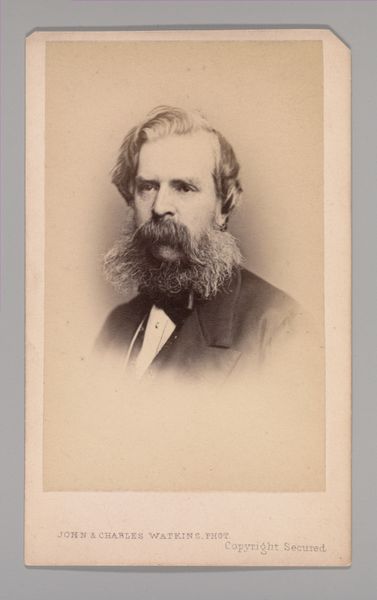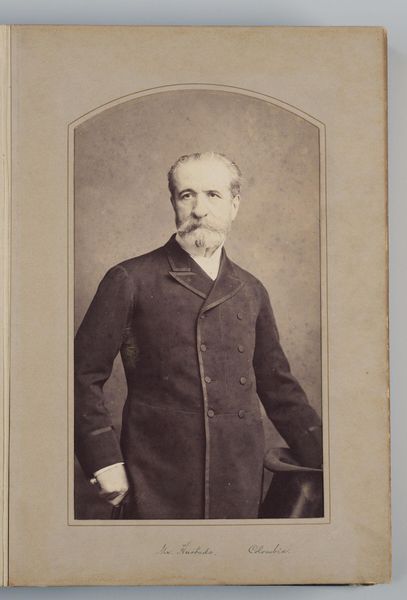
Dimensions: height 101 mm, width 63 mm
Copyright: Rijks Museum: Open Domain
Editor: Here we have Ernst Ulbrich’s, “Portrait of an Unknown Man,” made sometime around 1871-1872, possibly using a gelatin-silver or albumen print. I'm immediately struck by how faded and delicate it looks, like a forgotten memory. What do you see in this piece? Curator: I see the echoes of societal expectations imprinted on this man's carefully cultivated image. Look at the meticulous grooming, the imposing moustache balanced by equally impressive sideburns. These details speak of a conscious performance of masculinity in a rapidly changing world. Editor: Performance? That’s interesting. What makes you say that? Curator: Photography itself was still a relatively new medium at this time, requiring subjects to hold still for extended periods. Each element, from the crisp bow tie to the somber coat, suggests a deliberate effort to project respectability. These are visual cues designed to transmit specific messages about identity and status, a story that perhaps reveals more than it conceals. Editor: So, it's like he’s staging himself for the camera and, in a way, for society? Curator: Precisely. He becomes a symbol of his era. What’s fascinating is how those symbols resonate differently with us today. We see the photograph not just as a record of a person, but also as a cultural artifact, embodying anxieties and aspirations of a bygone era. How does knowing all of this alter your initial feelings, your ‘forgotten memory’? Editor: It shifts it from just a personal reaction to seeing the man as representing something bigger, a whole period of history. Thanks, that really enriches my understanding. Curator: And your fresh eyes help me reconsider the weight and persistence of these cultural symbols. A valuable exchange, indeed.
Comments
No comments
Be the first to comment and join the conversation on the ultimate creative platform.
